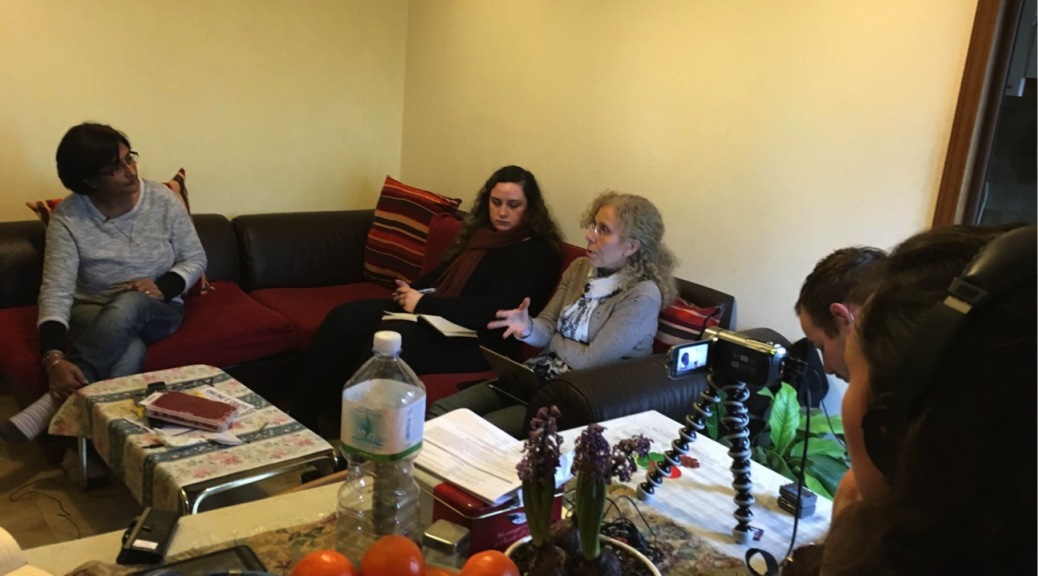It is hard to believe that we have already been in Bologna for a week already! The time seems to be flying by as all of our days are packed with interviews and interactions with different people. I can tell that Bologna is starting to feel like home for me and everyone else in the mosaic! Whether it be from finally being able to navigate the Bologna streets, or finding your favorite gelato place (I am pretty sure La Sorbetteria is everyone’s favorite), we are all starting to feel comfortable and fall in love with this beautiful city!

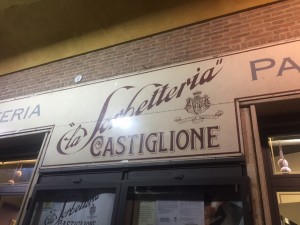
We started off our second week here with an amazing interview with Emi Ferdous who works for the organization Lai-Momo. According to their website (http://www.laimomo.it/a/index.php/en/) Lai-Momo is “a cooperative society that provides services in the field of communication, carries out research and provides technical assistance for development… We possess in-depth knowledge of topics relating to migration, European integration and relations with ACP (Africa, Caribbean and Pacific) countries.” Lai-Momo does various things within the Bologna community and also they publish material related to African culture. In our meeting with Emi we focused on her and Lai-Momo’s work with migrants who come to Italy.
Myself (Hyla), Ralph, Isaiah, Nidia and Maddie, as well as professors Marini-Maio and Borges, all went to interview Emi. We all met up at 2 to take the bus to meet Emi at her apartment. We got there before she did, since she was on her way home from her work at the reception center that Lai-Momo helps run in Sasso Marconi. We all hung outside a caffè next to her apartment building while we waited for her to come home. When she arrived she took all of us up the 5 flights of stairs to make it into her apartment, a trek she makes multiple times a day. She graciously invited all 7 of us into her home and found seats for all of us to sit with her in her living room to talk. The room felt comfortable and warm, you could tell a family lived here. We all appreciated how hospitable she was with us.
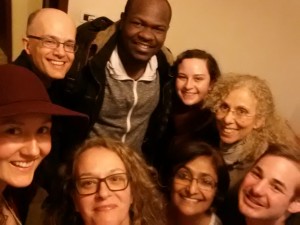
We began our interview learning about Emi’s own story as a migrant. She was born in Pakistan, but after the Bangladesh and Pakistan civil war in 1971 it was no longer safe for her and her family to remain in Pakistan since her dad worked for the government and many people had a problem with that. She and her family escaped to Bangladesh when she was about 8 years old. She had a hard time adjusting to the life in Bangladesh, and talked about how it was hard to be Pakistani and live in Bangladesh. She also had to learn Bengali. Her trouble living in a new culture and the language barriers she faced are similar to the problems many of today’s migrants to Italy face.
She grew up in Bangladesh and then in 1993 she migrated to Italy and has lived here in Bologna ever since with her husband and 20 year old daughter. She also faced a number of troubles when she migrated to Italy from Bangladesh. Again she came to a new place where she didn’t know the language or the culture. She also faced issues when it came to having her educational degrees in history, art, and archeology recognized in Italy. It was hard for her to get opportunities in Italy when she first arrived. However, she worked hard to learn the Italian language and got a post-diploma in Italy for mediation and diplomacy. This opened the doors for her to be able to work with migrants through Lai-Momo.
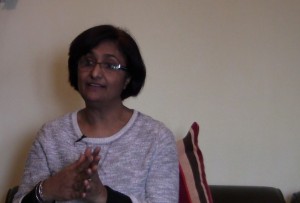
Emi then told us about the process migrants go through once they are received in Italy. It was very interesting to learn about this process. We have spent a lot of time talking about migrants’ journeys, but it was interesting to learn what happens to them once they successfully make it into Italy. Migrants are taken to the first receiving center and three main things happen here. First they go through identification, second they are given a health screening, and lastly they do the C3, which is the formalized request form to ask for asylum. They usually stay at the first receiving center for 4 to 6 weeks. After that they are sent to the 2nd center, the hospitality center, like the one in Sasso Marconi where Emi works. Here they work on their applications for asylum. With the help of legal aids, the asylum seekers write out their story and describe why they need asylum. They stay at this 2nd center for anywhere from 1 year to 16 months depending on how long it takes for their asylum request to be processed. Their asylum request is determined by the commission, which is made up of four members; one from the government body, one from the police, one for the UNHCR, and one from the Ministry of the region. One member of the commission interviews the asylum seekers and then all four members meet to discuss and decide the outcome.
The process of requesting asylum can be a very lengthy process, so in the meantime while the asylum seeker is staying at the hospitality center in Sasso Marconi, there are different opportunities available to them. The first priority of the center is that the (im)migrant learn Italian. Italian classes are given, so they learn the language and can begin looking for a job, which the center also helps them with. The center works to give them the important skills they need to be successful on their own while they are waiting for the outcome of their asylum application. It is crazy to think that someone could spend over a year in Italy learning the language and possibly working just to have their asylum application rejected and then to be deported back to their home country!
Emi described for us her typical day at work.There are two shifts, one from 8 am to 3 pm and the other from 3 pm to 11 pm. There are 5 to 6 people working per shift. She usually works the first shift. Once she arrives at work she helps with receiving the new people to the center. They need to be registered, showered, given a health assessment, medicated if necessary, given food, and then are assigned to a place to stay and are sent to rest. Next from about 9 am to 1 pm she works with the police to fingerprint them, their photos are taken, and id’s are made. Then she has a lunch break from 1 pm to 2:30 pm. After lunch she organizes the tasks for the people coming in to take on the next shift.
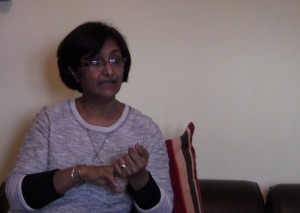
Meeting with Emi was a wonderful experience and it gave us a lot of insight into the process of first receiving the migrant, as well as what happens to them as they await the decision of their asylum application. In the end of our talk with her, Emi talked about the idea of how when we make borders, we make problems, and then we want to solve the problems, but in all reality we need a world without borders. With so much talk about stricter border controls, and putting up fences, it was refreshing to hear Emi’s outlook. We all left Emi’s apartment feeling a lot more knowledgeable about Lai-Momo and the work they do, as well as what happens to the immigrant once they make it into Italy and as they await their asylum application decision.
-Hyla
